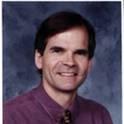
Article
Establishment of Psathyrostachys-Juncea (Fisch) nevski seedlings on a foothill range site in central Utah
Journal of Arid Environments
(1995)
Abstract
Seedling emergence, survivorship, and production of Psathyrostachys juncea, Russian wildrye grass, was monitored for 2 years at a foothill site, with vesicular soils, in central Utah. We studied the influence of seed mass, seeding depth, and seed source (Vinall and Syn-A) on seedling establishment. Seedling emergence was promoted in these soils by heavy seeds, shallow seeding depths, and Syn-A. Survivorship was promoted by heavy seed masses and shallow seeding depths but not by differences in seed source. In the second year of growth, plant basal cover and shoot biomass were greater in rows planted at shallow seeding depths or with Syn-A but not in rows of heavy seed masses. Thus, the control of seeding depth is critical in the revegetation of degraded sites and, at times, may be more important than mean seed mass or seed source. (C) 1995 Academic Press Limited.
Keywords
- artemisia bunchgrass steppe,
- revegetation,
- Russian wildrye,
- seed mass,
- seed source,
- seeding depth
Disciplines
Publication Date
September, 1995
DOI
https://doi.org/10.1006/jare.1995.0046
Citation Information
Christopher A. Call. "Establishment of Psathyrostachys-Juncea (Fisch) nevski seedlings on a foothill range site in central Utah" Journal of Arid Environments Vol. 31 Iss. 1 (1995) p. 33 - 44 Available at: http://works.bepress.com/christopher_call/14/
